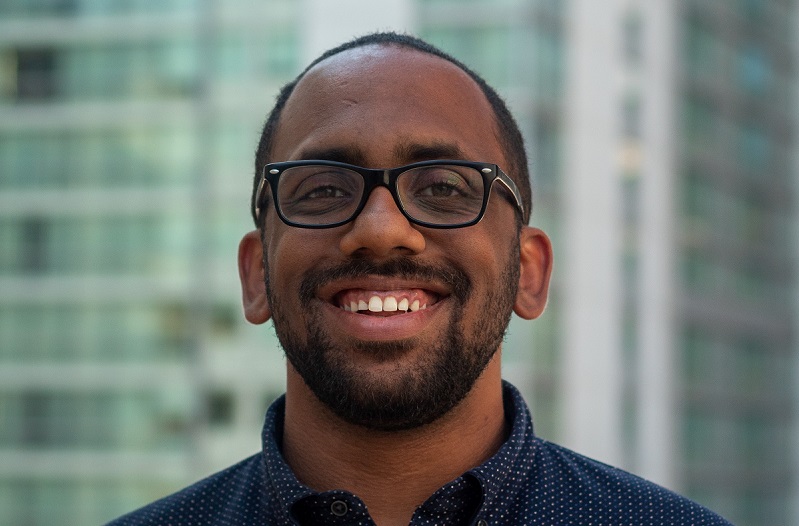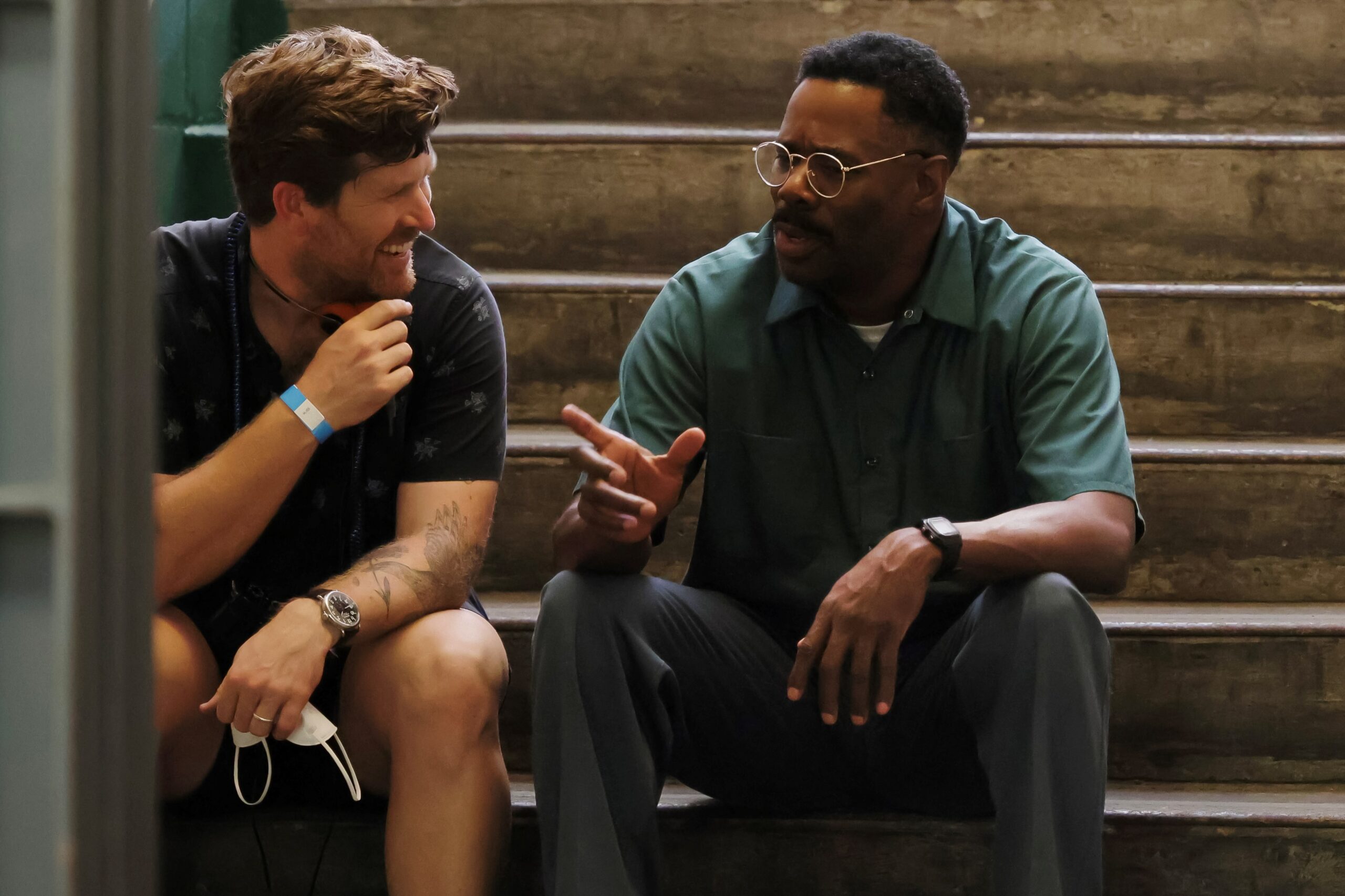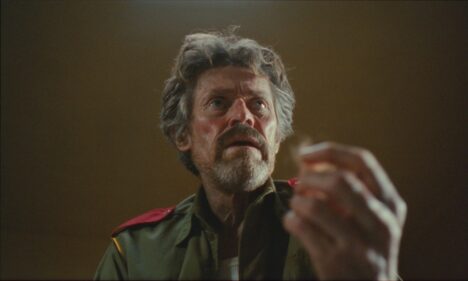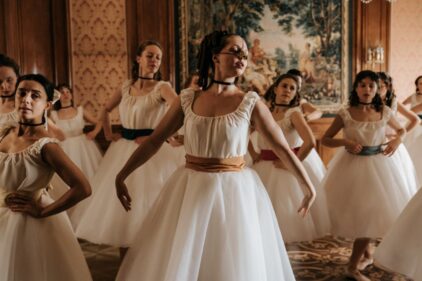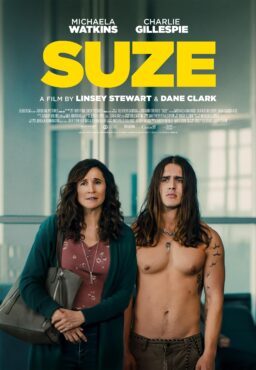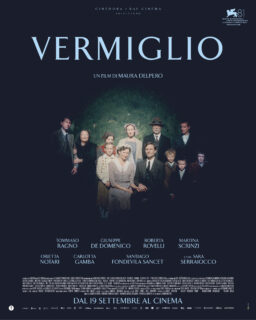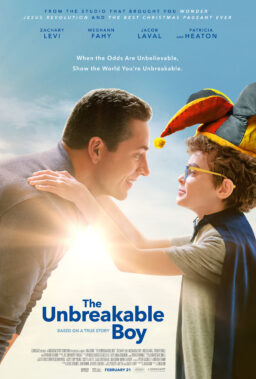Three years ago, Clint Bentley and Greg Kwedar released their gorgeous second feature “Jockey,” an immaculate portrait of an aging horse rider (Clifton Collins Jr.) confronting his broken past and his bleak future. That intimately shot work, which combined stars with first-time actors, was a neorealist jolt. Now, they’ve returned with another striking film, one that is aurally and visually different but no less incisive about the desire to find healing in the aftermath of a difficult life.
“Sing Sing,” directed by Kwedar and co-written by Bentley, takes place in a maximum security prison and follows a band of incarcerated men as they mount an original production of a time-travel comedy set in ancient Egypt called Breakin’ The Mummy’s Code. It has big stars: Colman Domingo as playwright Divine G and Paul Raci as theater producer Brent Buell. It also has new talents like Clarence “Divine Eye” Maclin and Sean “Dino” Johnson, who are alumni of the RTA (Rehabilitation Through the Arts), the program depicted in the film. As these men navigate the legal system and their own souls while staging the production, they grow closer, revealing truths and hopes in each other that they did not know existed.
While Kwedar and Bentley make a formidable team, they would not have made the film without the help of producer Monique Walton (“Bull”), who believes in their equitable profit-sharing system.
During the Chicago Critics Film Festival, RogerEbert.com spoke with Kwedar and Walton in person about trusting actors, deciding to film in a real prison, and casting Paul Raci.
This interview has been edited and condensed.
How did you get the ball rolling on Sing Sing?
Greg Kwedar: Eight years ago, right before my first film, “Transpecos,” premiered at SXSW in 2016, I was producing a short documentary for a friend inside a maximum security prison in Kansas. And it was my first time ever going behind the wall. On a tour of the facility, I passed by a cell, and a young man was raising a rescue dog. It stopped me in my tracks because I saw the healing that was happening in both directions between this man and this animal, and all my expectations about prison and incarcerated people were flipped on their head. A lot of those expectations had been propped up by the movies I’d seen.
I was just desperate to know if there was anyone else out there trying to do things differently in prison, and in the hotel room that night, I got on Google and literally typed in who was doing things differently in prison. At the top of the search field was Rehabilitation Through the Arts (RTA) in New York. They’ve been covered in big press, like The New Yorker, The New York Times, NPR. They’d done all the classic plays from Shakespeare to “A Few Good Men” and “On the Waterfront.” But there was this Esquire piece of one of the only originals they had done for two nights only at Sing Sing about a time-traveling musical comedy called Breaking the Mummy’s Code, and there was just something about the tone of it, of this like Madcap comedy in such a dark and oppressive place that felt like life to me. Tonally, it was also like “One Flew Over the Cuckoo's Nest” meets a Michel Gondry film or something. It just felt like an invitation to discover more.
But there were a lot more years in between. Monique came on kind of late, relatively.
Monique Walton: Six years in we met by chance. We were both in Austin and we had never intersected until we met through the Austin Film Society. We were able to hang out, and I learned about how he and Clint made “Jockey,” and we had just made “Bull,” and we were talking about this idea of a community-based approach to filmmaking and what it meant and the structure of the movie and how much he made it for. A couple of months after we hung out, Greg and Clint invited me to moderate a panel they were doing on the model they made “Jockey” on, and then afterward, they pitched me “Sing Sing.” They were like: We don’t have any money yet. We have a bit of a draft of a script, but we’re shooting in two months. You know, what do you think? You wanna jump in?
GK: We ambushed her. She had no choice. [Laughs]
MW: I was like: Let me think about it. [Laughs]
But I think the uniqueness of the story, the fact that it was a program that I didn’t know about, even though I’m originally from New York, was just powerful. It felt like the way that they wanted to do this, by bringing in the alumni cast in to help tell the story, was a strong vision.
I know some RTA members were involved in the project from the beginning, but what, when, and why was the decision made to expand their involvement?
GK: I mean, really, eight years ago. The real-life Brent Buell invited Clint and I to his apartment in New York and was like: You should meet some of these alumni and hear from them yourself. That first breakfast, the first guy through the door was Clarence Maclin, and the minute he walked in the room, he just had that thing, that presence, that energy and that confidence. And yet, he also feels like a prophet to me. He can distill all his experiences through his own specific cadence that feels like he’s tapping into some of the mysteries of life. And then Divine G walked through the door that first day.
So many of the cast featured in the film were there, and then the next phase of that evolution was Clint and I became teachers in the program. We taught a film acting class at a max security prison called Green Haven that RTA operates in. When we were in that classroom and in that room, the talent and the vulnerability, people were more present and really looking through you eye to eye and demanding the same of you. There was this electric energy, and we knew that could be an anchor to a project like this. Having made “Jockey” and seeing that special alchemy that can happen with first-time film actors—I mean, they have a lot of stage experience with first-time film actors and established actors like Colman [Domingo] and Paul [Raci] and Sean [San Jose]—when those two things come together and become stronger than the sum of their parts or the parts being stronger in the sum, it kept expanding. But that was always the vision from the beginning.
Were there any films that served as an inspiration for this?
GK: When I first read the article, I felt “One Flew Over the Cuckoo’s Nest,” and then the playfulness of discovery and creation in Michelle Gondry’s “Be Kind Rewind.” And then there were other contemporary works that had a spiritual connection like “Short Term 12” or “Y tu mamá también,” which was a movie that had an energy to it. The best way I would describe it is that I’m interested in movies where the world can breathe into the work, and it feels like it’s dancing with life. Those were the ones that were more directly operating in the creative process for me.
Why did you decide to shoot in an actual prison instead of shooting on location?

MW: I don’t think it was ever discussed. I’ve never shot on a soundstage. Part of the appeal of this filmmaking for me, anyway, is having the place as a character and constructing that place. You can do anything on a soundstage—but it doesn’t carry the same history of the walls and such. One of our first conversations was like: We need to find a prison in upstate New York. I started Googling if there are any decommissioned prisons. And we found a downstate prison, which was decommissioned like a month before we actually got there to shoot. They were literally like moving the furniture out.
It was the original intake prison. So, every alumni had gone through that prison before they did their full bids. That was something we started talking about really early in the prep: How do we create a safe space when we’re going back into this charged space and where we’re asking people to step back into this place emotionally?
GK: I’d been a volunteer teacher in an active prison for a couple of hours a night, but doing these 10-12 hour days in this place, even though it was decommissioned and not operating, there’s a weight to it. There’s no heating, air or ventilation in these facilities. We were there in the summer and the [heat] sits on you like an anvil. There’s also this sensation of the ghosts in the walls. Every single window is just razor wires choking you. It started to dawn on us that it was a pretty oppressive place to work in. The minute we got to leave that location, we were all happy to be watching out our rearview mirror. But there’s also this sort of feeling, despite the razor wire and the walls and the way heat sits in there, you can still create art in places like this, which feels like an act of rebellion in a way.
“Jockey” has so many gorgeous golden hour shots. This is oppressively bright in some ways, a totally different lighting choice.
GK: A lot of high noon. We tried to lean into the beauty of that. And shooting on Super 16, I think, enabled us to capture beauty in unexpected places. A big thing we also thought about is, we had these beautiful horizons and sunsets in “Jockey” and in “Transpecos” endless desert—and now we’re coming to such a confined environment. Would we be able to achieve scope? A big thing that unlocked that for us in working with Pat [Scola], our DP, was realizing that this is a movie about the landscape of the human face and about drawing close and then drawing closer to get something infinite.
The attention to faces here necessitates long takes, which requires quite a bit of trust with your actors. Did you immediately have that trust or did it take time to build?
GK: That’s a great question. I wanted to roll longer for two different reasons. One: whenever Colman’s onscreen, he’s the kind of actor you never want to call cut. Something is always happening. Something’s always alive. If you haven’t called cut, he will keep exploring, and often there are really magical discoveries in those scenes. With the alumni cast members, specifically if they were drawing from their own lived experience, there’s a different sort of draw not to call cut because something else beyond just even the filmmaking process is happening at that moment. There’s a catharsis unfolding for them and for all of us. It felt like something sacred that needed to defy the normal cold-hearted editing you would do in a scene.
MW: And it’s also just something that Greg does. He creates space. In allowing space for people to blossom in terms of especially not calling cuts, that feels like you create the possibility that something bigger can happen in the moment. That also gives people this ability to feel empowered to share. When someone tells this story, you’re just like: CUT. It doesn’t really work there.
GK: There were a few times when we ran out of film, but we didn’t say “cut.” We just let it happen because, again, there was something else going on.

You mentioned empowerment, and I’m thinking about your equitable financing system. Could you explain how that works?
MW: Greg started this on “Jockey.” What’s built into this idea of pay equity, transparency, and profit participation is the idea that in these independent, small, low-budget films, you never have enough money, and everyone brings so much. Everyone should get paid the same weekly or daily rate from end to end, down to the PA to the Editor, down through post. And then everyone participates in the profits based on the phase of the phase of the film’s life that you participated in. We just found that in this way, it sets the tone, sets the culture, and attracts the people who want to be a part of that idea to the film. And it felt like the right way to tell this kind of story. It’s such a collective creation.
GK: We’re saying that time is the only variable of someone earning more or less and that everyone has the same intrinsic value that they’re bringing to the work, which, in turn, I think creates a culture where the best ideas can actually win and come forward and be seen because people have the confidence to do that. They’ve moved from an employee mindset to a partner mindset as well. And it shows in the end work. I think when the process is good because it’s like: If I’m ever gonna empty the tank on something and give everything to a work, I’m gonna do it on this one because this is how I’m seen and this is how I’m embraced. Those things go hand in hand. We’ve seen immense value through this radical transparency, openness, and shared system. And we’re just curious about how far it can go. How much can we scale? What other films and artists could adopt an approach like this? We can’t wait to see what unfolds from there.
The story of how Colman Domingo got involved is pretty well documented. But how did you get Paul Raci? Because it’s such a specific tone he has to set.
GK: It’s a hard role to cast because we’ve seen a lot of movies from that point of view. We were very sensitive about if you brought in a certain kind of actor in that role, they could pull the energy and attention away from the film. Paul exudes this sort of immense warmth that I think really fit the community and the troupe of actors he was joining alongside. There was also a lack of ego. But when it was time to lead, he stepped forward. And when it was time to be in support and part of the cast’s fabric, he was a marvel. We finally landed on Paul—he was always there in plain sight—but it was a week before starting when we actually cast him.
I woke up in the middle of the night, and I just said to myself: Paul Raci. It was like three in the morning, and we were on location. I texted Monique that, and I just got: Yes. And the next day—he had the same management as Clifton Collins Jr.—and we’d been very close with his team, which felt like a sign. Paul was on the phone with his team that day. He had the script that night. We were on Zoom with him the next day for lunch, and he was in at the end of the Zoom and on a plane a few days later.
What do you hope people take from this film?
MW: It’s always a hard question. One of the things is sitting with this idea that we’re the most incarcerated country in the world. In terms of telling the story, I think that this shows how these men found their humanity through this rehabilitative program. It makes you imagine what this society would be like if we adopted a different mindset toward our incarcerated population.
GK: For me, it’s the human potential. Behind the walls and all the myriad ways that could, if recognized, open up what beauty could be created. Not just in the arts but really across the whole human experience. In a general audience, in particular, in the last few years, we’re starting to recognize we might be imprisoned in cages of our own design, and the way out is oftentimes through community and friendship. Hopefully, a movie like this can help you celebrate the different kinds of friends in your life, like the new ones like Clarence, who come and shake everything up and unlock something that maybe you’re holding onto, and the old friends like Mike Mike, who can know what’s up just with a look. I want to encourage more celebration of that, especially now.
